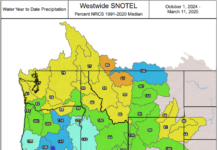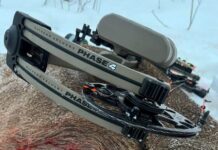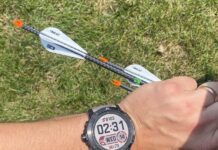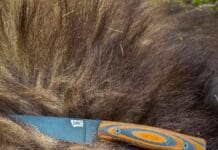
MSR vs Jetboil
The year I was just getting into backpacking, there was a website also getting started. It was Rokslide–a forum and e-mag type website built around gear for the backpack hunter. In my searches, I would find gear lists upon gear lists from members. Using these, I began narrowing down what I’d need. One of those things would be a light, packable stove that I could use to boil water for freeze-dried meals. For simplicity, or really not knowing any different, I wanted a stove that used the little canisters as they’d be easy and readily available. That was back in 2012 and there were a lot of options back then. Eight years later, there are even more. That’s why I thought it would be great to test the MSR vs Jetboil.
All-In-One vs. Build-It-Yourself Systems
One of the main questions I needed to ask myself was did I need a stove to boil water only, or did I need the option to cook in a pan? One thing I learned about stoves reading on the forums was not all systems are created equal. Systems like the often thought of Jetboil are all-in-one systems with the cup and stove all included when you purchase. The issue with the all-in-one systems is they’re often proprietary to one another, making the stove portion limited to the cup provided to cook with. Whereas with a build-it-yourself system, you purchase the stove and cookware separately to build a kit for your needs. Doing it that way can also cut weight and bulk down with the right system.
Cost
At the time, another big positive about the build-it-yourself system for me was most were cheaper than said Jetboil. Being a college kid on a budget, I purchased an MSR Pocket Rocket for $32 off of eBay and a GSI Minimalist cup to go with it. The first trip we took, my dad brought a GSI packable pan that we cooked some hot dogs on, proving the versatility that style stove can provide. That system would last me for the next five years until I replaced the stove with a Soto Windmaster. Same small type stove as the Pocket Rocket but supposedly more fuel-efficient so I put my trusty Pocket Rocket on the shelf for a backup.

The Downsides
After my experiences with that style of stove, I noticed in really windy conditions I had a tough time keeping the stove lit and I could tell efficiency was lost. Wanting to try some different all-in-one type systems, better known for handling wind, I reached out to Kendall at Black Ovis to discuss my options. Knowing the Jetboil is a brand people automatically think of for stoves, I wanted to have one in the lineup. After rave reviews on the forums about the MSR Reactor, I wanted that also in the running. After a discussion with Kendall, he recommended we add in the MSR Windburner to the mix. I soon had a Jetboil Flash, MSR Windburner and MSR Reactor on my doorstep ready to use for the fall. All models had a 1L cup.
Jetboil
My forum thread leading up to this article had a lot of questions and mixed reviews on Jetboil. One burning question was, “Is Jetboil anti-hunting?”. I found the website for the company that owns them. The company is called Johnson Outdoors and they also own brands like Eureka camping, Old Town kayaks and MinnKota trolling motors. They neither supported nor opposed hunting specifically anywhere on their website. Those are the facts I could find and now that we’ve addressed it, I’m leaving it behind for the rest of this review.

Jetboil Flash
The first thing I liked after opening the box was the cozy they put on their cup. It’s a foam type of material that is comfortable to hold and doesn’t get hot after boiling. They also have a heat meter on the side of the cup that turns colors as the water arrives at boiling temperature. The lid has an opening for sipping and has some small holes for straining. Inside of the cup, I found the stove and a three-legged canister stand and room for a small fuel canister inside. Around the bottom of the cup was a detachable plastic bowl with measuring marks equaling one cup. I used this detachable cup for coffee and splitting meals on occasion.
The cup and stove lock into each other so the cup can’t tip-off of the stove. One downside to this is often times you have the dehydrated meal in one hand while trying to unlock the cup from the stove. This can be difficult. The stove has an internal igniter that I wouldn’t consider reliable, but it is handy. In cold temperatures, the igniter just didn’t work well but in warmer temperatures, it didn’t have an issue. The bottom of the cup has a proprietary heat transferring system called a FluxRing that helps transfer the heat from the flame to the water. I’ve heard of numerous accounts of this FluxRing overheating and melting down while the user was trying to melt snow, specifically in the titanium versions. I didn’t experience any issues but it’s something to be aware of. Available here.
Price: $99.95
My Scale Weight (no fuel): 14.1 oz

MSR Windburner
To be honest, I wasn’t too sure about the Windburner. I’d heard so many good things about its older brother, the Reactor, that I almost wasn’t open to trying it. Kendall explained to me that it was one of his go-to stoves and because of the price, it’d be a better comparison to the Jetboil. I took his advice. You can order one here.
Boy was I pleasantly surprised after it arrived. First, I need to mention the sleeve around the outside of the cup for burn-less handling. The material is thin and I found when I boiled a lot of water, it did get hot to the touch.
The lid was designed for both straining and drinking. Inside I found a fuel canister stand and the stove with room for a small fuel canister. Like the Flash, a plastic bowl is attached to the bottom of the cup but is larger than the Flash’s. The thing I noticed immediately was how much beefier and well built the Windburner felt over the Jetboil Flash. Neither of the MSR’s features an internal igniter and while it’s not the end of my world, after using one on my Soto and the Flash it would be nice having the option.

The Windburner uses a stove design by MSR they call the Radiant Burner. You can get super technical about how it works here. Essentially heat is dispersed more evenly over a porous disc allowing an efficient transfer of heat. It also lets them design the pot to fit close and be very wind resistant. Like the Flash, the Windburners cup and stove lock together. However, the Windburner doesn’t lock itself as tightly together so twisting to unlock with one hand is easy. You can also turn the heat down to a simmer with this stove if you’d like. Whereas the other two stoves are either full roar or they’re off. The way the burner is built, I believe you could simply set a pan on top of it if you wanted. MSR does have accessories for this stove like a skillet, saucepot and coffee press that integrate right into the burner and cup.
Price: $149.95
My Scale Weight (no fuel): 14.4 oz

MSR Reactor
The Reactor is known for being a solid built reliable workhorse and for a good reason. Once I got this stove in my hands I could see how it has to be very tough and wind-resistant. But this stove is a bit different from the previous two I’ve talked about. Instead of a cozy to hold onto, it has a handle that folds out. The lid has a small pour opening and holes for a strainer but you can tell they aren’t meant to drink directly out of. When all is contained inside the pot the handle folds over the top of the lid and latches. Order yours here.
Inside I found the burner–different than the Windburner but with the same great Radiant Burner design. Instead of the edges coming up around the burner disc for the pot to lock into, the burner is pretty exposed. This allows the pot to sit directly on top of the burner for close contact and outstanding wind blockage. With this design, the cup cannot lock onto the burner so there is some chance the pot would be tipped over.
A small fuel canister can fit inside the cup with the burner but it has to go in a certain way. The fuel canister needs to be placed in first upside down with the burner following also upside down with the fuel adjuster facing up. You can then put the lid on and fold the handle over to lock everything in pretty snug. It doesn’t have an extra bowl attached like the other two stoves had and it’s a very, what-you-see-is-what-you-get stove but in a great way.
Price: $219.95
My Scale Weight (no fuel): 1lb 1oz

The Head-to-Head
I used these stoves from August through October fairly regularly. I had a few hunts where we hunted from a base camp, so I cycled through all three stoves each day. And was able to test both the MSR’s vs Jetboil directly. In August, the weather was nice and I really couldn’t tell a huge difference between the stoves performance-wise. Both of the MSR burners are fairly quiet in comparison to their sibling the Pocket Rocket and were also quieter than the Jetboil Flash. The Windburner stove was even more so than the Reactor. When lighting the MSR burners, you almost can’t tell they’re lit until the entire burner disc turns orange–that’s a plus in my book.
Early Season
I found myself throwing the Jetboil in my pack before hiking out on a scouting mission. The overall feel of the cozy, weight and lid design made me want it on the mountain for warming up coffee. That is until October hit. We were headed out scouting the day before the season opened for elk on the 15th.
Late Season
This being a short but chilly morning hike, I threw the Jetboil in with some coffee. After arriving at a glassing point with the brisk mountain wind in my face, I decided to get some water going and see how the Flash did in the wind. I protected the burner as much I could, but the internal igniter wouldn’t work so I tried it with a lighter.
Unsuccessful still, I found that fuel wasn’t flowing through the stove as it should be based on the sound. I would open the regulating knob a little bit, more fuel would flow through but then it would stop. This forced me to open it even further before it finally took the flame. Once lit, I had ten-inch flames screaming towards my face, but after some initial rough running it seemed to warm up and then work fine. I was using Jetboil’s small fuel canister and they were both cold.

Lost Confidence
After that ordeal, I headed back to camp in the bottom of the valley where the sun hadn’t hit yet, so it was just as cold. I pulled out the MSR Windburner to make breakfast and more coffee. I had the MSR small fuel canister on it, turned the fuel regulating knob, heard fuel flowing, struck my lighter and it lit no problem. There wasn’t as much wind down there, but I’m convinced it wasn’t a wind problem with the Flash. On the hunts following in October, I would have the same issue with the Jetboil Flash when it was chilly. The fuel wouldn’t flow correctly and I had a terrible time getting it lit.
Once we backpacked in on the October elk trip, I opted to take the Reactor. After some less than desired planning for our water source, we were left melting snow for the better part of the trip. The Reactor handled that with zero issues and Ryan Avery made the comment a couple of times about how well it did. From that trip, I went on a personal hunt for deer and experienced a lot of wind. I relied on the Reactor and the Windburner during that trip as I just didn’t trust the Flash in any kind of in-climate weather. As for blocking wind, I rated the Reactor as the best, Windburner second and the Flash the least effective when wind was a factor.
Boiling Tests
To make this article a real comparison I wanted to do some direct testing between the stoves in the same conditions. I decided to complete this in my kitchen and do a couple of different things. The first test would be simple boil times and the second would be an efficiency test.
Boiling Efficiency
For the efficiency portion, I boiled two cups of water five times and weighed the fuel can before and after the test to see how much fuel weight had bled off. I tried getting both the stove and burner cooled down before each boil and would use the same temperature of water each time, but I am in no way saying this test is scientifically accurate. I live at 4,500 ft, the temperature was 65 degrees and I used Jetboil canisters for all of the stoves. (As a disclaimer, I am convinced that MSR makes a better fuel canister over the Jetboil. This may fluctuate if you change fuel brands and mixtures.)
The first one tested was the Windburner with a boil time of 1:28 and a weight difference of 26g after the five boils. The second tested was the Jetboil Flash with a boil time of 1:19 and a weight difference of 20g. The last was the Reactor with a boil time of 1:51 and a weight difference of 23g. While the tests show what they may, I don’t think it really matters in the end at least for the average backpack hunter like me. I need a stove that’s going to work when I need it to work.
My Closing Thoughts
After experiencing these stoves side-by-side, I do have some thoughts. But first, I was only able to use these stoves for about three months, so the durability after a few seasons I can’t and won’t comment on.
I started looking at these all-in-one systems because I wanted to handle wind better. For me, the Jetboil Flash didn’t offer any advantage with the wind over a build-it-yourself system such as the Pocket Rocket or the Soto. If you only hunt the early seasons when it’s warmer and you like that all-in-one system, the Flash will work well. It’s also the cheapest option.

But, if you hunt during the later season, or you want a stove that’s going to handle a lot, take a look at the Windburner and Reactor. The Reactor is an outright beast of a stove and I don’t think there’s a season it couldn’t handle. It does have some drawbacks based on what your needs are. The first could be it’s the most expensive. You’re also going to need to bring your own cup for coffee with the Reactor. Whereas the Windburner has a sippy lid that can be drank out of as well as the cozy to hold on the outside. This will add to the cost a little and also the weight.
My Choice
The Windburner is more suited to someone who is going to bring a stove absolutely everywhere with them and needs the most bang for the system with the lid design and included bowl. If you need a stove for the extremest of conditions, I would lean to the Reactor. For the most value per dollar, I give it to the Windburner with confidence.
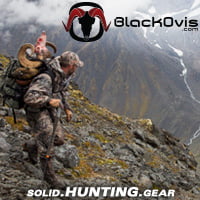 Whatever your decision, these stoves and accessories can be purchased at Black Ovis. If you think these options aren’t for you, listen to my podcast with a fellow Rokslide forum member about even more stove options here.
Whatever your decision, these stoves and accessories can be purchased at Black Ovis. If you think these options aren’t for you, listen to my podcast with a fellow Rokslide forum member about even more stove options here.
You can comment on this article or ask Jordan questions here.





